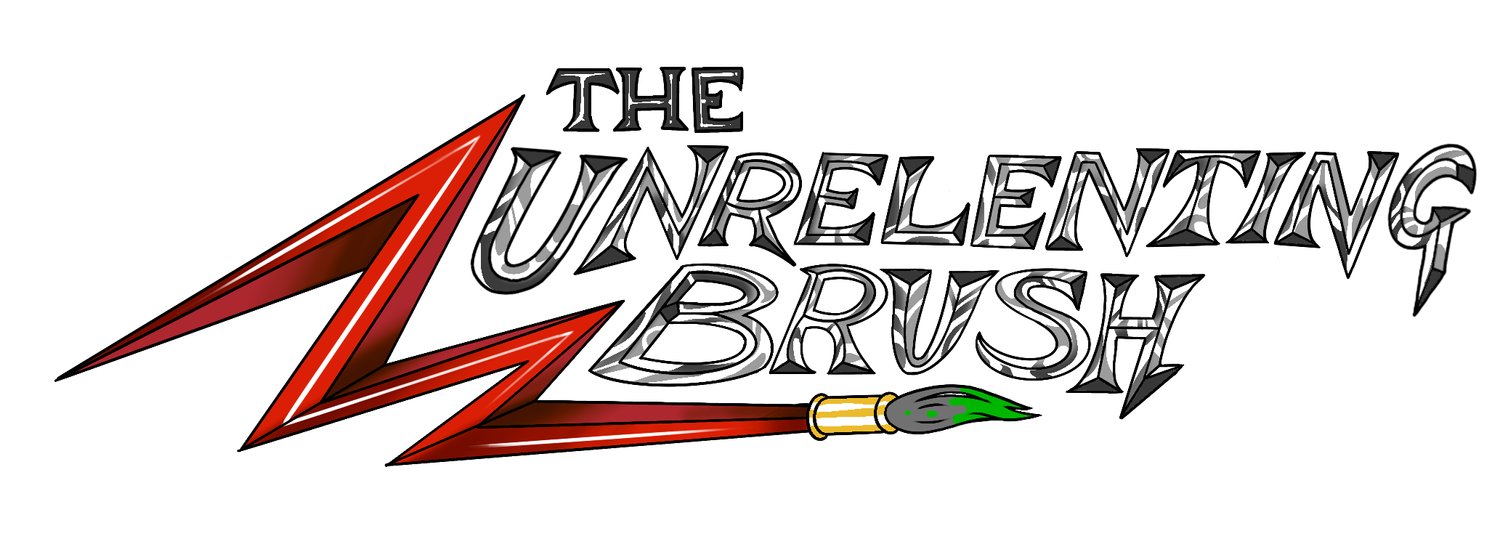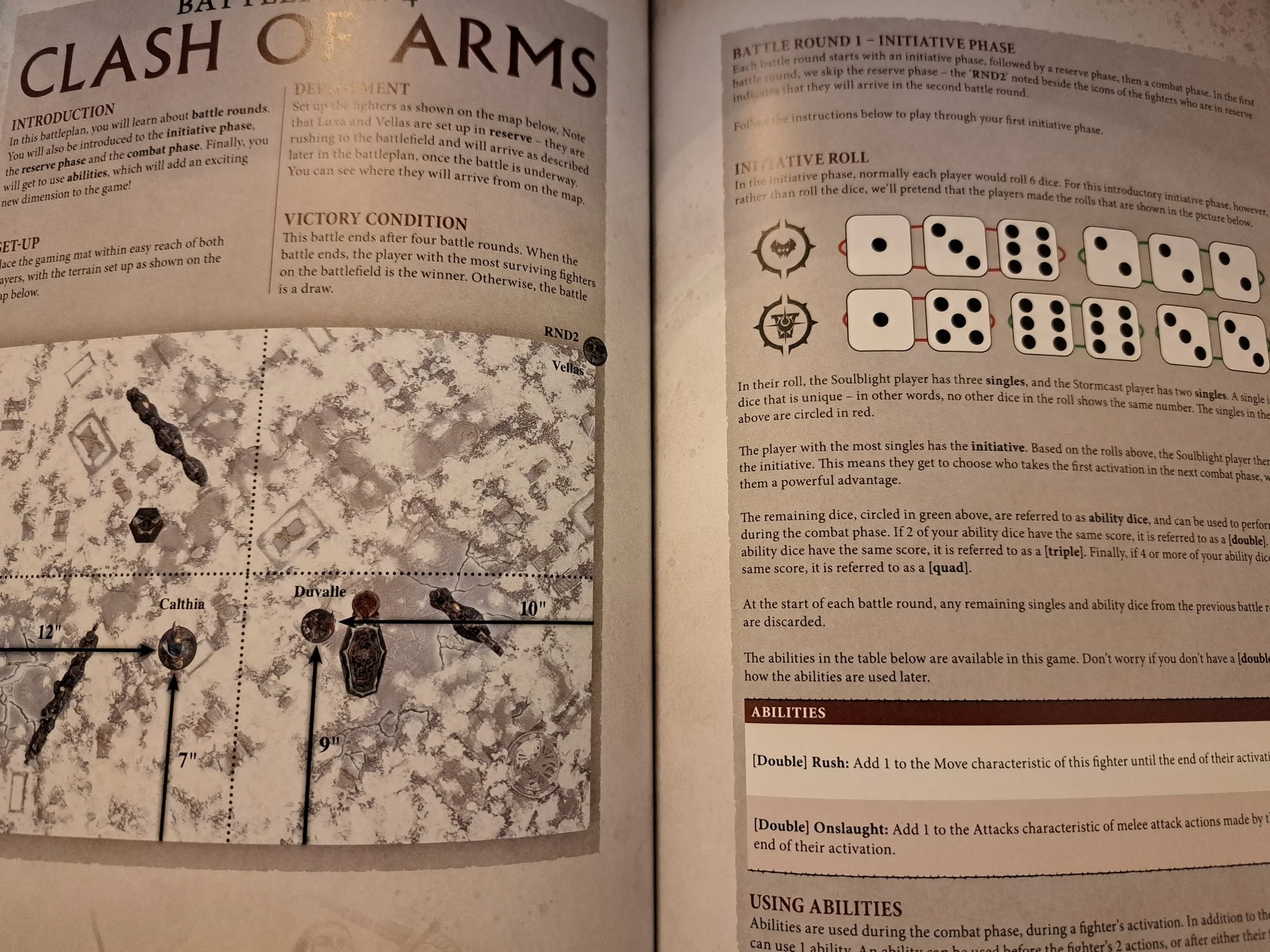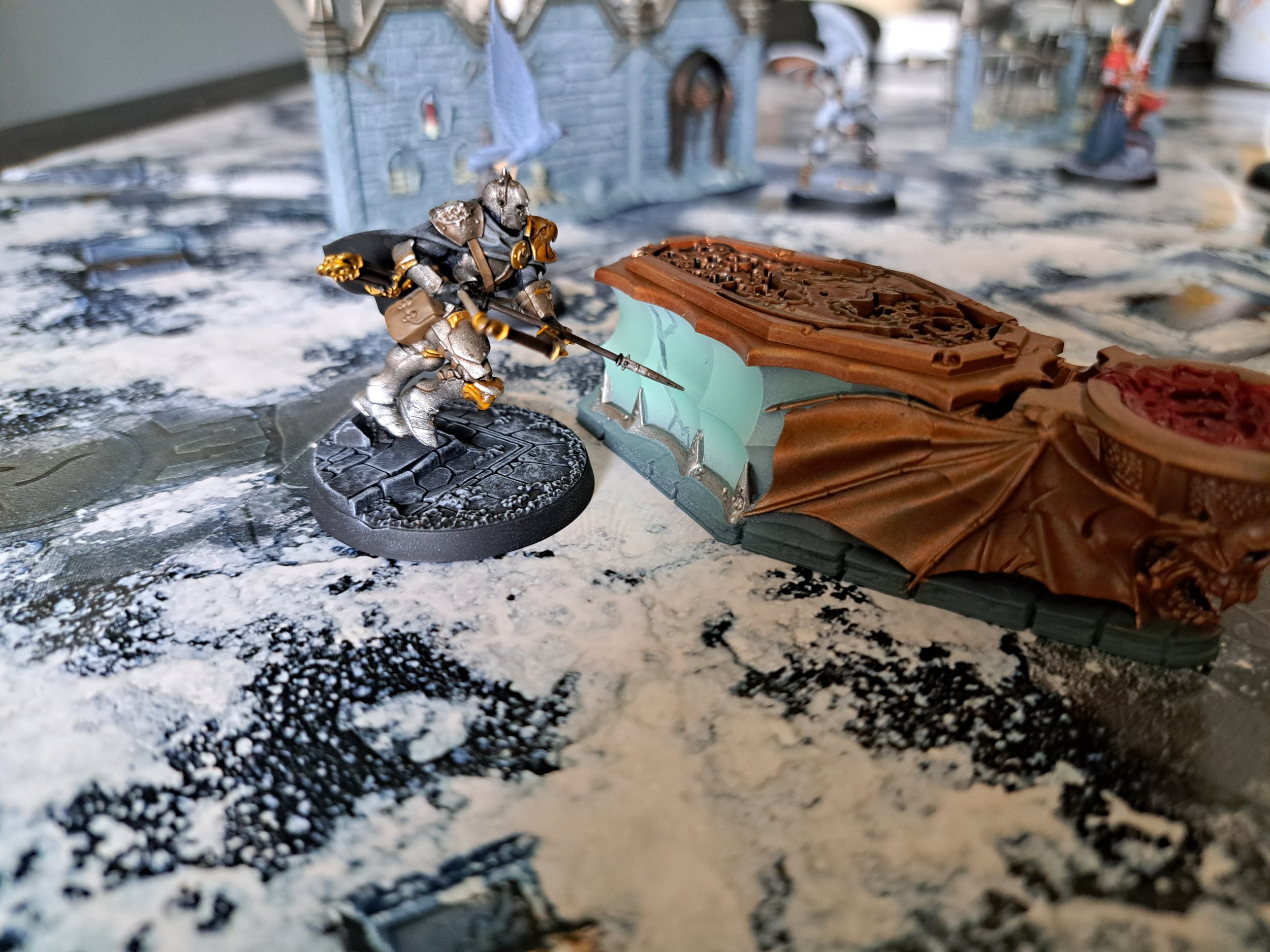Warcry: Crypt of Blood Review
Many tabletop wargames can come across as verbose and complicated - which is where Warcry dives in wielding the mighty sword of simplicity and accessibility. Warcry is well-known for its fast and frantic games, situating itself as Games Workshop’s “beer and pretzels” game, in a sense. The Crypt of Blood box looks to simplify things even further, acting as the ideal introduction to the game for anyone who may have never played Age of Sigmar or even any other tabletop game before. Let’s see just how well this is accomplished.
To re-emphasise, Warcry excels in the clear and easy-to-understand ruleset that props it up. When stood next to other Games Workshop systems such was Warhammer 40,000 and even Kill Team, Warcry a fraction of the complexity of those other systems. Thus, whenever asked, I will always push Warcry as the ideal starter system. Not just because of the simple rules, but because the games can be cinematic, brief and intense without getting bogged down in complicated rules.
Thus, with Crypt of Blood, how does this seek to slimline even further? Well, the first approach is to reduce the number of models in the game even further. The standalone Crypt of Blood box comes with two warbands at 4 models each. This is around half the size of existing warbands and means that rounds are even shorter and the amount of “strategizing” needed is also reduced. Whilst some would see this as being less forgiving than the full game since you have fewer ways to fix any mistakes, it’s worth pointing out that Warcry is at its best when games aren’t taken with an overly-competitive mindset. Rather than spending an afternoon on a game of Warcry, you could complete several games in this time - Crypt of Blood doubles down on this even more so. Thus, you don’t need to worry about making mistakes in your game because chances are it’ll soon be over and you’ll be onto your next one.
The warbands themselves are stylish and distinct. These includes two Warhammer Underworlds warbands, Xandire’s Truthseekers (Stormcast Eternals) and the Crimson Court (Soulblight Gravelords). The models are exceptionally distinguishable from each other with a clear purpose for each. For example, this Stormcast has a big hammer, therefore he should be up front smashing things. Once again, this helps new players quickly learn at a glance what they should do with their fighters. My biggest issue with these two warbands is a little bit political within the context of the other systems. In the previous edition of Warcry, all Underworlds warbands had Warcry rules whereas in the current edition they have seen no such update. To see two of the warbands introduced in this manner leaves me feeling uneasy about whether the other warbands may or may not be coming. That doesn’t detract from the Crypt of Blood box itself, but I felt it worth mentioning.
Back to the matter at hand, Crypt of Blood comes with a full rulebook. Within this book are some narrative segments explaining the warbands and their motives, along with missions and then full rules for the game. The missions within the book are very hand-holdy in explaining how the game is played. The first mission is all about moving your models pertaining to the rules included. From here, each mission unfurls more and more of the rules covering all aspects of the game including combat, abilities and Wild Dice. The Wild Dice segment is the most welcome segment as this is usually the most difficult element of the game to explain to newer players. All of the missions include well-illustrated examples of the rules, reinforcing their execution.
Alongside the rules, every thing you need to play the game is within the box. You get the stat cards for each model in both warbands as well as their ability cards. There’s a full token sheet that includes health/wound tokens, objective/treasure tokens, battle group tokens. This box even contains a measuring stick and dice, so there’s nothing more you need to purchase in order to play the game. Granted, the contents are reduced to accommodate the smaller warband, but in the context of the box you don’t need anything else.
As mentioned previously, the rulebook does also contain the full rules for playing Warcry beyond this box. This is a very blatant gateway into the full game, and is a welcome one. The natural progression from the missions included will be to then play “full” missions with the included warbands, before inevitably wanting to expand into some of the larger warbands. The full rules are comprehensive and cover every element of the game. The final section of the book acts as a teaser for what awaits. More robust and varied warbands, monsters and thralls along with the various weird and wonderful terrain sets that are available.
Reading through the above and looking at Crypt of Blood with the scrutinous eyes of it needing to be ultimately accessible for new players, it’s difficult to find fault. However, there’s an element of the box that I do feel is a misstep. The models themselves are very details and quite complex for this to act as the ideal starter set. The Crimson Court are clad in multiple types of armour and cloak and pallid skin, with the Truthseekers donned in armour, capes and wielding spindly, fragile weapons. The warbands do look fantastic, but I imagine these would intimidate most new to painting within this hobby. There are plenty of existing Underworlds warbands that would work for this (as they are all push-fit, as I recall) and so choosing these two feels like a less-than-ideal decision. The older models of Steelheart’s Champions would have been more suitable, up against more recent The Exiled Dead. Chances are the two warbands chosen were done so specifical to suit the narrative of the box, which I understand and it would make sense.
Furthermore, the terrain despite being so sparse is also quite tricky when it comes to painting. The blood pouring into the casket is cool and likely the most simple piece of terrain to paint. However, the fences are infuriatingly challenging to paint patiently due to the sheer number of skulls impaled onto each of the bars. Complaining about skulls in a Warhammer setting does indeed feel bizarre, but with the aim and objective of Crypt of Blood it simply feels like it adds very little in value but plenty in frustration. What could have been a very quick task to paint the fences becomes tedious. The walls don’t quite suffer the same fate, thankfully, and these can be painted up quickly to a very reasonable standard - especially for brand new hobbyists. The Neferata bust, whilst very cool, sits nicely in the middle as to be fun to paint but needing a little more attention.
Additionally, the terrain offers no opportunity for harnessing the fun and risky gameplay involving platforms and elevated areas. Hitting a foe with a ranged attack, only to send them hurtling off their precarious purch and impaling upon the spikes below is very much part of the charm of Warcry. The rules for this are in the rulebook, but the terrain included grants no chances of these wonderful cinematic moments that make Warcry shine.
Regardless of this, the box remains an adequate inclusion to the Warcry line. It’s certainly how I would look to introduce someone to the game for the first time and will likely do so. Chances are that you’d just need to remind other players that the great thing about Warcry is that it doesn’t need to be treated with the complications and superfluousness that other game systems do. Thus, try not to get stuck into playing Warcry “properly” and, instead, focus on having fun with the system and know full-well that Crypt of Blood merely scratches the surface of why Warcry is such a brilliant game.
Note - Games Workshop provided us with a copy of Warcry: Crypt of Blood for content purposes.
#AdWIP #WarhammerCommunity #Warcry




